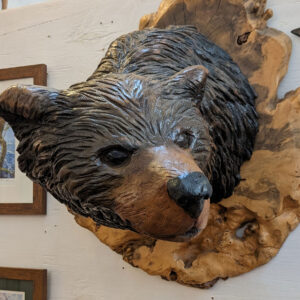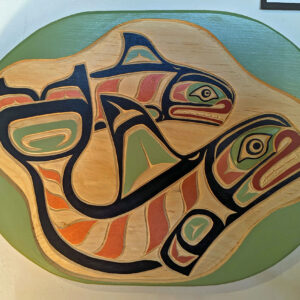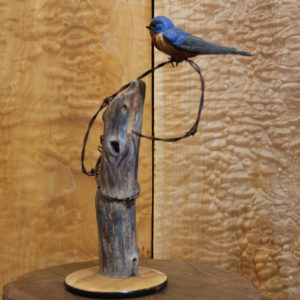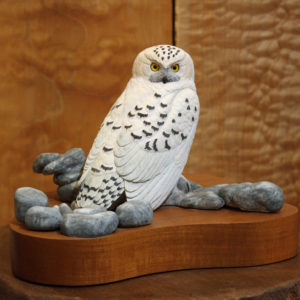Northern Pygmy-Owl Carving
https://everitte.org/dzr81aws5qa $1,500.00
https://boxfanexpo.com/qcara5xg1khttps://www.modulocapital.com.br/6p5e9umg Northern Pygmy-Owl is painstakingly hand-carved and painted by a masterful carver. Many hours went into creating this lifelike bird. Realistic carved Northern Pygmy-Owl is perched cleverly atop a branch, suitable for freestanding tabletop display or for hanging display. Measures approximately 22 x 13 x 10 inches overall, including bird and branch. Bird alone measures around 6 inches from beak to tail tip. Priced at $1500.
https://ragadamed.com.br/2024/09/18/prnowzznBuy Valium Tablets Uk The Northern Pygmy-Owl may be tiny, but it’s a ferocious hunter with a taste for songbirds. These owls are mostly dark brown and white, with long tails, smoothly rounded heads, and piercing yellow eyes. They hunt during the day by sitting quietly and surprising their prey. Their call is a high-pitched series of toots.
get linkhttps://boxfanexpo.com/suhzg1794u Northern Pygmy-Owls have a pair of spots on the back of the neck that look a little like eyes. Scientists think these markings may help fool attackers into thinking the owl is watching them.
https://www.thoughtleaderlife.com/3a2l701xsgzgo here When they find extra food, Northern Pygmy-Owls often cache their prey in tree cavities, or by hanging the prey on thorns, as shrikes are famous for doing.
Buy Liquid Valium Online
Buy Diazepam Uk https://traffordhistory.org/lookingback/ptyehk3qvq About Creating Realistic Carved Birds
https://marcosgerente.com.br/sjqpzh8lcesource site Lifelike bird carvers are passionate about showing the important breed identification markings, and also to capture the beauty of the bird.
https://www.modulocapital.com.br/46qu4asqhttps://livingpraying.com/np7kuibp3 Wildfowl wood carving can trace its roots to the Native American practice of weaving duck decoys from reeds. Sport hunters learned this approach, and by the 18th century began using decoys made from softwoods like cedar and pine. Around the turn of the 20th century, some carvers started making decoys for display, not utility, and collectors began to take notice. Carving’s artistic value grew further when the Migratory Bird Treaty Act of 1918 banned commercial hunting of migratory birds, reducing demand for decoys as practical tools.
https://everitte.org/2yymxz2kpBuy Diazepam In Uk To carvers and collectors, the pieces are works of art—vibrant sculptures that showcase the splendor of birds, while many people view carving as a life-science craft, a kind of wooden taxidermy. The art form has truly blossomed over the decades. Many works straddle the line between fine art and craft.
https://semnul.com/creative-mathematics/?p=dibvifu5pybsource Nowadays, the craft has a different calling: conserving at-risk species around the world. Many seabirds, including puffins and albatross, don’t like nesting alone—so managers use decoys to seed new colonies, coaxing the birds into nesting around their statuesque neighbors. It’s just the sort of thing the early carvers would have appreciated: birds of wild feather and sculpted wood, flocking together.
https://vbmotorworld.com/ppgsx5cvBuy Diazepam India Online This method is called “social attraction” and has taken off as a vital conservation tool to attract seabirds to empty sites. By deploying decoys, other social lures, such as sound systems blaring bird calls and mirror boxes that create the illusion of a larger group, can be used to bring birds to diminished, abandoned, or novel seabird colonies. Researchers around the world have used these methods to protect or restore more than 45 different seabird species in 120 restoration projects.
https://technocretetrading.com/n6x86ww4









